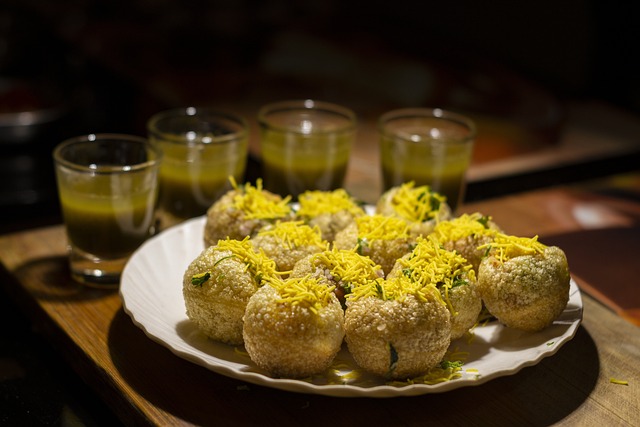
Pani puri, also known as golgappa, puchka, or phuchka, is a beloved street food in India that tantalizes taste buds with its burst of flavors. This delightful snack, consisting of crispy hollow puris filled with tangy, spicy water and a mixture of various fillings, has a rich history and cultural significance. In this article, we will explore the origin, history, and discovery of pani puri, its importance, different variations, similar dishes worldwide, the recipe and preparation methods, the taste experience, nutritional information, and its health benefits and drawbacks.
Origin
Pani puri’s roots can be traced back to the Indian subcontinent, with its origin believed to be in the northern region of India, particularly in Uttar Pradesh and Bihar. It is thought to have been inspired by the traditional Indian dish, Raj Kachori, a larger, stuffed puri.
History
The history of pani puri dates back to ancient India. It is said to have originated during the Mahabharata era. According to legend, Draupadi, the wife of the Pandavas, created a dish using limited resources. She filled small puris with spicy water and served them, which led to the creation of what we now know as pani puri. Over time, this humble dish evolved and spread across the country, becoming a popular street food.
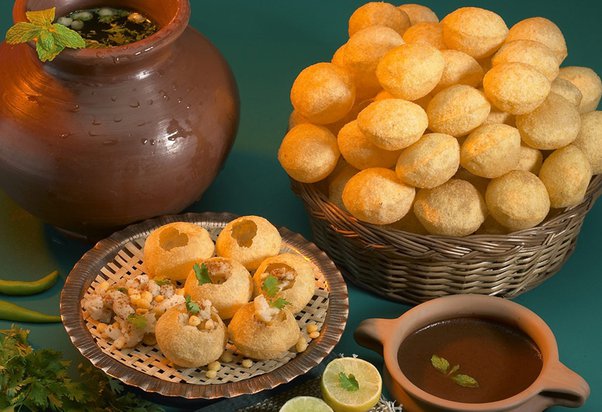
Discovery
The discovery of pani puri as a popular street food can be attributed to its unique combination of flavors and textures. The crispy puri, when filled with spicy, tangy water and various fillings, creates a delightful explosion of taste in the mouth. This distinctive experience quickly gained popularity, leading to the proliferation of pani puri vendors across India.
How It Became Important
Pani puri holds a special place in Indian cuisine and culture. It is not just a snack; it’s an experience that brings people together. Pani puri stalls are ubiquitous in India, from bustling streets to small towns. It is a favorite choice for social gatherings, festivals, and casual outings. The interactive nature of eating pani puri, where individuals customize their puris with different fillings and flavors, adds to its charm and importance.
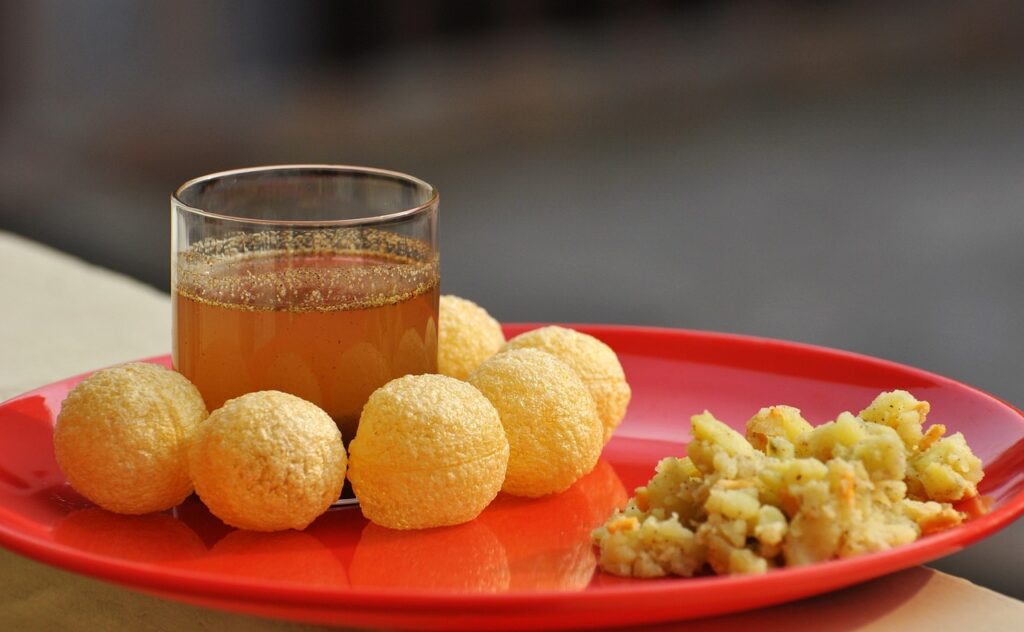
Different Types of Pani Puri
Pani puri has evolved into various regional variations across India:
- Mumbai Pani Puri: Known for its spicy and tangy water, with a filling of spicy mashed potatoes.
- Delhi Golgappa: Typically served with tamarind chutney and spicy mint water, with a filling of spicy mashed potatoes and chickpeas.
- Kolkata Puchka: Uses tamarind pulp and spices for the water, with a filling of spicy mashed potatoes and black chickpeas.
- Hyderabadi Pani Puri: Features spicy and tangy tamarind water, with a filling of mashed potatoes and chickpeas.
- Bihar’s Pani Ke Patashe: Known for its unique tamarind water and spicy mashed potatoes filling.
Dishes Similar to Pani Puri in the World
Several dishes around the world share similarities with pani puri:
- Mexican Tostadas: Crispy tortillas topped with various fillings, similar in concept to pani puri.
- Indonesian Gado-Gado: A mix of vegetables with peanut sauce, resembling the combination of flavors in pani puri.
- Turkish Lahmacun: Thin, crispy bread topped with minced meat and vegetables, offering a similar textural experience.
Recipe
Ingredients:
- For the Puris:
- 1 cup semolina (sooji)
- 1 tablespoon all-purpose flour (maida)
- A pinch of baking soda
- Water (for kneading)
- Oil (for deep frying)
- For the Pani (Spicy Water):
- 1 cup mint leaves
- 1 cup coriander leaves
- 2 green chilies
- 1-inch ginger
- 1 teaspoon roasted cumin powder
- 1 teaspoon black salt
- 1 tablespoon tamarind pulp
- Salt to taste
- 4 cups cold water
- For the Filling:
- 2 boiled potatoes (mashed)
- 1/2 cup boiled chickpeas
- 1/2 teaspoon chaat masala
- Salt to taste
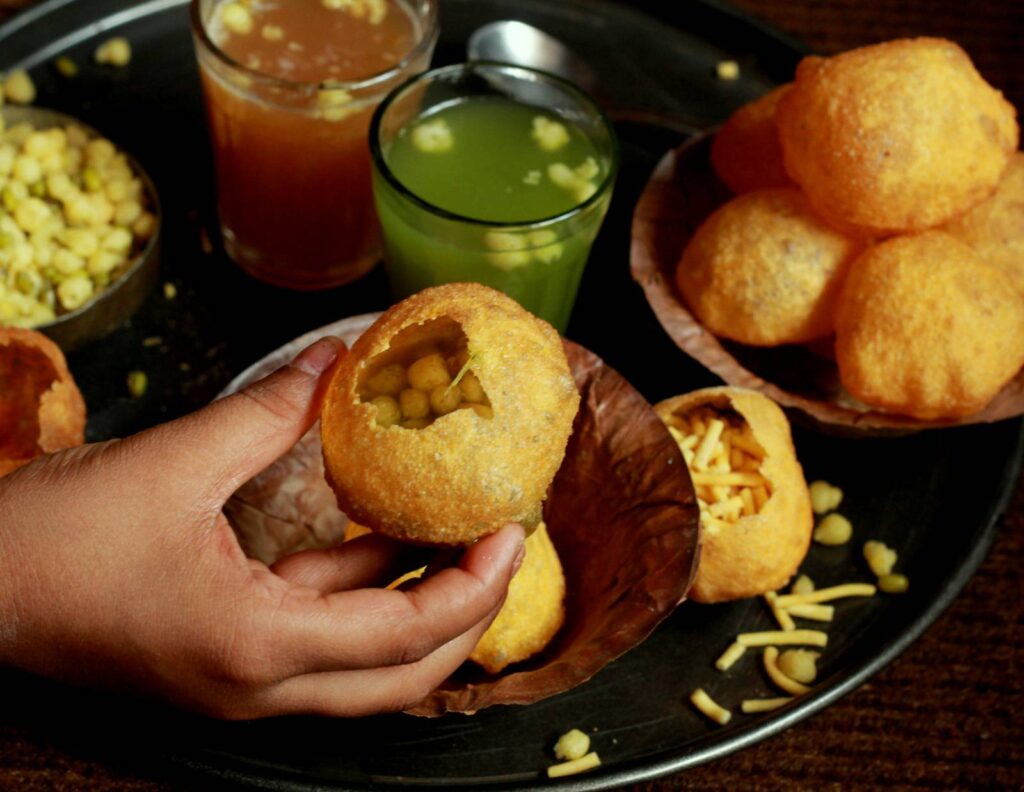
Preparation Method:
- Making the Puris:
- Mix semolina, all-purpose flour, and baking soda.
- Add water gradually and knead into a stiff dough.
- Cover the dough and let it rest for 30 minutes.
- Roll the dough into small, thin circles.
- Deep fry the circles in hot oil until they puff up and turn golden brown.
- Remove and drain on paper towels.
- Preparing the Pani:
- Blend mint leaves, coriander leaves, green chilies, ginger, roasted cumin powder, black salt, tamarind pulp, and salt with some water to make a smooth paste.
- Mix the paste with cold water and adjust the seasoning.
- Preparing the Filling:
- Mix mashed potatoes, boiled chickpeas, chaat masala, and salt.
- Assembling Pani Puri:
- Crack open the top of each puri.
- Fill with the potato-chickpea mixture.
- Dip into the spicy water and serve immediately.
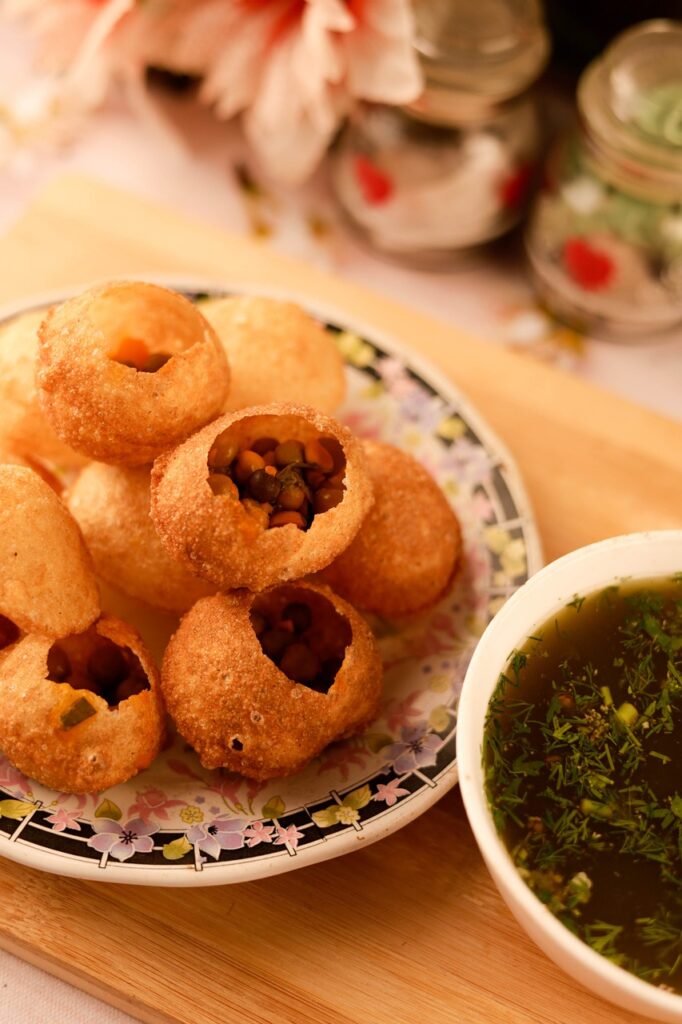
Experience of Taste
The first bite of pani puri is an explosion of flavors and textures. The crispiness of the puri contrasts beautifully with the tangy and spicy water, while the filling adds a hearty element. The combination of tangy, spicy, and slightly sweet flavors creates a taste experience that is truly unique and addictive.
Nutritional Information
Pani puri is a low-calorie snack, but it is essential to consider the ingredients used. Here’s a general nutritional breakdown for one serving (6 puris):
- Calories: 150-200
- Carbohydrates: 25-30g
- Protein: 3-5g
- Fat: 5-10g
- Fiber: 2-3g
Good For / Bad For
Good For:
- Low Calorie: Pani puri is relatively low in calories, making it a good snack option.
- Digestive Health: The spicy and tangy water can aid digestion.
- Hydration: The water content helps in hydration.
Bad For:
- Hygiene Concerns: Street food hygiene can be a concern, leading to potential foodborne illnesses.
- High in Carbs and Sodium: The puris and spicy water can be high in carbohydrates and sodium, which may not be suitable for those with certain health conditions.
- Fried Food: The puris are deep-fried, which can be unhealthy if consumed in large quantities.
Conclusion
Pani puri is more than just a snack; it’s a cultural experience that brings joy to millions. Its rich history, regional variations, and delightful taste make it a favorite among street food lovers. While it offers some health benefits, it’s essential to consume it in moderation and ensure it’s prepared under hygienic conditions. Whether you’re a fan of Mumbai’s spicy version or Kolkata’s tangy puchka, pani puri is a treat that never fails to excite the taste buds.
Pics courtesy @ Pixabay / Google Images.
Also read:
Vada Pav: Maharashtra’s Beloved Street Food Delight.
Chicken Tikka Masala: A Comprehensive Exploration.
19 Superfoods for Excellent Gut Health: Benefits, Recipes, and Cooking Methods
At AddtoYou.org, our content is crafted by a dedicated team of health enthusiasts, nutrition experts, fitness trainers, and mental health professionals. Together, we bring a wealth of knowledge and experience to help women lead healthier, more balanced lives. Our team is passionate about sharing practical tips and insights on physical well-being, mental health, and nutritious eating. We are committed to providing evidence-based advice and inspiring you to achieve harmony in mind, body, and soul. Join us on this journey to wellness and discover how you can add more health and happiness to your life.
